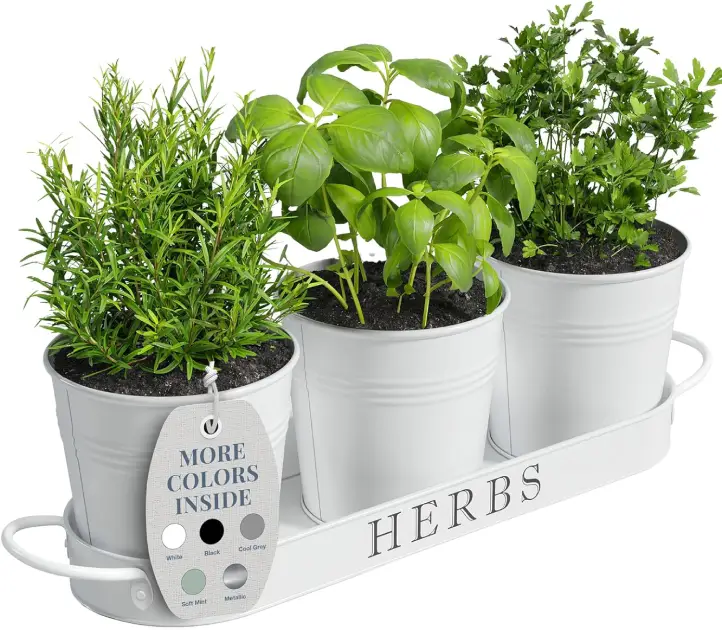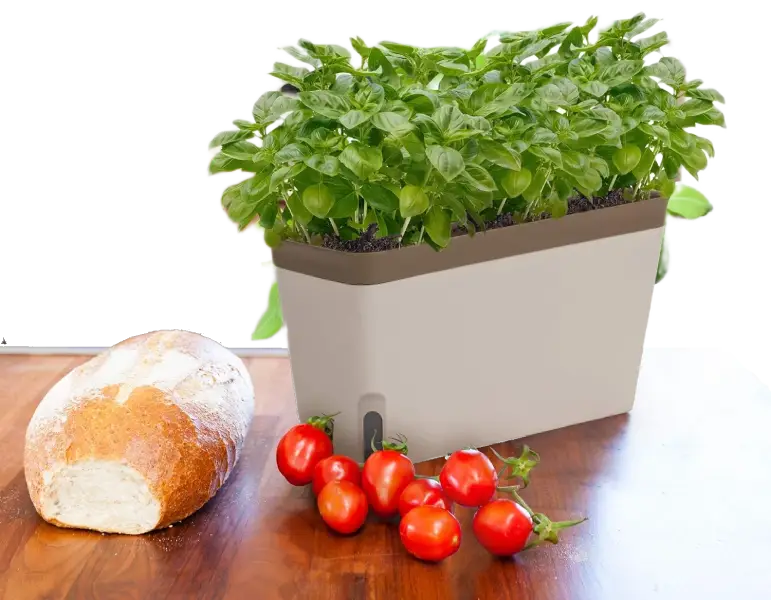Kitchen Container Herb Garden Systems
Herb Container Garden in Your Kitchen with Traditional Soil-Based Methods
Container gardening isn’t just for patios and balconies—it can thrive right inside your kitchen. Growing herbs, leafy greens, or even small vegetables in traditional soil-based containers is a practical and rewarding way to bring freshness into your home. Plus, it keeps your favorite ingredients within arm’s reach.

Barnyard Designs Indoor Herb Garden Planter Set
Vintage-style indoor herb garden planter with 3 pots and a tray. Perfect for windowsills, kitchens, or small spaces. Includes drainage holes and drip tray for easy care. Ideal for growing herbs like basil and rosemary indoors or out.

Self-Watering Herb Planter for Kitchen
Features large water reservoirs and wicking strings that help automatically hydrate your plant life to keep it going strong with hands-free support. windowsill herb garden for your kitchen.
Why Choose Kitchen Container Gardening?
A container garden in your kitchen is ideal for:
- Convenience: Harvest herbs or greens while cooking.
- Space-saving: Ideal for apartments or homes with limited outdoor space.
- Aesthetic appeal: Adds greenery and a touch of nature to your kitchen decor.
Best Plants for a Kitchen Container Garden
These plants do especially well in a soil-based container garden indoors:
- Basil
- Parsley
- Chives
- Mint (in a separate container to prevent spreading)
- Lettuce
- Spinach
Choosing the Right Containers
Select containers that fit your kitchen space and meet plant needs:
- Size: Ensure the container is deep enough for roots (6-8 inches for herbs).
- Material: Terracotta, ceramic, or plastic are all suitable.
- Drainage: Always choose containers with drainage holes to prevent root rot.
Soil and Drainage Tips
Use a high-quality potting mix designed for indoor plants. Avoid using garden soil, which may be too heavy and poorly draining. Adding perlite or vermiculite can improve aeration and drainage.
Light Requirements
Most kitchen herbs and greens need 6–8 hours of sunlight daily. Place containers on a sunny windowsill or under a grow light if natural light is limited.
Watering and Maintenance
- Watering: Keep soil moist but not soggy. Use your finger to test the top inch of soil before watering.
- Pruning: Regularly pinch back herbs to encourage bushy growth.
- Feeding: Use a balanced liquid fertilizer every 4–6 weeks.
Design Tips for Your Kitchen Garden
- Group plants: Cluster herbs together in matching containers for a cohesive look.
- Vertical space: Use wall-mounted shelves or tiered stands to maximize growing area.
- Labels: Use chalkboard stakes or tags to identify each plant.
Benefits of a Kitchen Container Garden
- Fresh ingredients at your fingertips
- Healthier meals with homegrown herbs
- Reduced waste from store-bought produce
- A calming, green environment indoors
Start Small and Grow Over Time
Begin with a few easy-to-grow herbs and gradually expand your kitchen container garden herbs. With the right conditions and a little care, you’ll enjoy a year-round supply of fresh, homegrown produce right in your kitchen.

